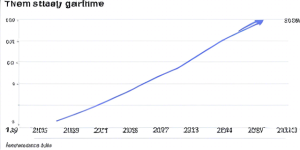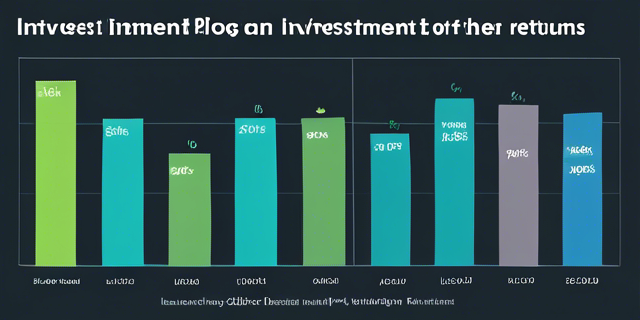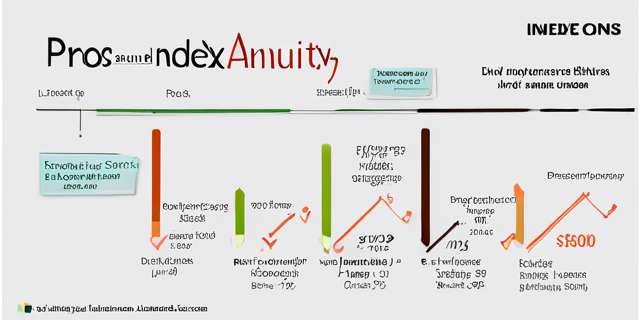Tax-Efficient Investing Strategies for High Income Earners

Hey there, my friend! If you’re a high-income earner, you know the drill – Uncle Sam always wants his slice of the pie. But what if I told you there are ways to keep more of your hard-earned cash? That’s right, we’re talking about tax-efficient investing strategies that can help you legally minimize your tax burden and maximize your returns. So, buckle up, and let’s dive into the world of savvy investing for those with a heftier paycheck.
Understanding the Tax Implications for High Income Earners
Before we get into the nitty-gritty of tax-efficient investing strategies, let’s first understand why they’re crucial for high-income earners like yourself.
The Tax Bite: Why High Earners Pay More
As your income rises, so does your tax rate. It’s the harsh reality of progressive taxation systems like the one we have in the United States. According to the Internal Revenue Service (IRS), individuals with a taxable income of $578,125 or more (for single filers) or $693,750 or more (for married couples filing jointly) fall into the highest tax bracket of 37% for the 2023 tax year.
That’s a significant chunk of your earnings going straight to the government. And if you’re not careful, those tax bills can quickly eat into your long-term wealth-building plans.
The Importance of Tax Efficiency for Long-Term Growth
When you’re investing for the long haul, the effects of taxes can be amplified over time. Even a few percentage points in tax savings can translate into substantial differences in your portfolio’s growth trajectory. That’s why implementing tax-efficient investing strategies is crucial for high-income earners – it allows you to keep more of your gains working for you, compounding over the years and potentially setting you up for a more comfortable retirement or financial freedom down the line.
Tax-Advantaged Accounts: Your Best Friends for Tax Efficiency
One of the most effective ways to minimize your tax burden is by taking advantage of tax-advantaged accounts. These accounts offer various tax benefits that can help you grow your investments more efficiently.
401(k) and Other Employer-Sponsored Retirement Plans
If your employer offers a 401(k) or similar retirement plan, it’s a no-brainer to participate. These plans allow you to contribute pre-tax dollars, lowering your taxable income for the year. Your investments can then grow tax-deferred until you start taking withdrawals in retirement, when you may be in a lower tax bracket.
But the benefits don’t stop there. Many employers offer matching contributions, which is essentially free money that can turbocharge your retirement savings. It’s like getting a guaranteed return on your investment right from the get-go!
Traditional and Roth IRAs: Retirement Accounts with Tax Perks
Individual Retirement Accounts (IRAs) are another powerful tool in your tax-efficient investing arsenal. With traditional IRAs, your contributions are tax-deductible, allowing you to lower your taxable income today while enjoying tax-deferred growth until retirement.
On the other hand, Roth IRAs offer tax-free growth and withdrawals in retirement, as long as you meet certain conditions. While you don’t get an upfront tax deduction, the ability to take out your gains tax-free can be a game-changer, especially for high-income earners who expect to be in a higher tax bracket during retirement.
Health Savings Accounts (HSAs): Triple Tax Advantage

If you’re enrolled in a high-deductible health plan, don’t overlook the power of a Health Savings Account (HSA). Contributions to an HSA are tax-deductible, your investments grow tax-deferred, and withdrawals for qualified medical expenses are tax-free – a triple tax advantage!
Not only can an HSA help you save for future healthcare costs, but it can also serve as a complementary retirement savings vehicle, making it an invaluable tool for tax-efficient investing.
Invest for the Long Haul: Maximizing Tax Efficiency with Asset Location
While tax-advantaged accounts are a crucial component of tax-efficient investing, they’re not the only piece of the puzzle. The way you allocate your assets across different account types can also significantly impact your tax bill.
The Power of Asset Location
Asset location is the strategic placement of your investments in taxable and tax-advantaged accounts to maximize tax efficiency. For example, you might want to hold tax-inefficient investments, like bonds or high-turnover funds, in tax-advantaged accounts like IRAs or 401(k)s. Meanwhile, more tax-efficient assets, such as index funds or stocks held for the long term, can be held in taxable accounts.
By carefully considering the tax implications of each investment and allocating them accordingly, you can minimize the drag of taxes on your overall portfolio returns.
Holding Investments for the Long Term
One of the most powerful tax-efficient investing strategies is to hold your investments for the long term, especially in taxable accounts. When you sell an investment you’ve held for more than a year, any gains are taxed at the lower long-term capital gains rate, which can be significantly lower than the ordinary income tax rate you’d pay on short-term gains.
For high-income earners, this strategy can provide substantial tax savings, allowing you to keep more of your investment gains working for you.
Tax-Loss Harvesting: Turning Losses into Gains
Even with a well-diversified portfolio, losses are sometimes inevitable. However, through a process called tax-loss harvesting, you can turn those losses into a silver lining. By selling investments at a loss, you can offset capital gains or up to $3,000 of ordinary income each year, effectively reducing your tax burden.
Tax-loss harvesting can be a powerful tool for high-income earners, especially in turbulent markets when investment losses may be more prevalent.
Charitable Giving and Tax-Efficient Investing

If philanthropy is important to you, you can incorporate charitable giving into your tax-efficient investing strategy to potentially reduce your tax liability while supporting causes you care about.
Donating Appreciated Securities
Instead of selling appreciated securities and paying capital gains taxes, consider donating them directly to a qualified charity. By doing so, you can potentially deduct the full fair market value of the securities, avoiding capital gains taxes altogether.
This strategy is particularly beneficial for high-income earners who itemize deductions and hold highly appreciated investments in taxable accounts.
Donor-Advised Funds: Flexibility and Tax Benefits
Donor-advised funds (DAFs) offer a tax-efficient way to support charitable causes while potentially enjoying immediate tax benefits. With a DAF, you can contribute cash, securities, or other assets and claim an immediate tax deduction. The funds are then invested and distributed to qualified charities of your choice at a later time.
DAFs provide flexibility in your charitable giving, allowing you to front-load your donations and potentially maximize tax benefits in high-income years while spreading out your charitable distributions over time.
Estate Planning and Tax-Efficient Investing
For high-income earners with significant wealth, estate planning is a critical component of a tax-efficient investing strategy. By proactively addressing potential estate tax liabilities, you can ensure that more of your hard-earned wealth is passed on to your loved ones or charitable causes.
Trusts and Estate Tax Planning
Trusts can be powerful tools for estate tax planning and wealth preservation. By transferring assets into various types of trusts, such as revocable living trusts or irrevocable trusts, you may be able to remove those assets from your taxable estate, potentially reducing or eliminating estate tax liabilities.
However, trusts can be complex legal structures, and their tax implications can vary greatly. It’s essential to work with qualified estate planning professionals to ensure your trusts are set up and administered correctly.
Philanthropy and Legacy Planning
For those with a strong philanthropic inclination, incorporating charitable giving into your estate plan can be a tax-efficient way to leave a lasting legacy. Strategies like charitable remainder trusts or charitable lead trusts can provide tax benefits while supporting causes you care about.

Professional Guidance: When to Seek Expert Advice
While tax-efficient investing strategies can help you keep more of your hard-earned money, navigating the complex world of taxes and investments can be daunting. That’s why it’s often wise to seek professional guidance, especially for high-income earners with significant assets and unique financial situations.
When to Consult a Financial Advisor
A qualified financial advisor can provide invaluable insights and guidance on tax-efficient investing strategies tailored to your specific goals, risk tolerance, and financial circumstances. They can help you develop a comprehensive investment plan that incorporates tax-advantaged accounts, asset location strategies, and other tax-minimization techniques.
Additionally, financial advisors can assist with ongoing portfolio management, rebalancing, and tax-loss harvesting, ensuring your investments remain aligned with your tax-efficient investing strategies over time.
The Role of Tax Professionals
While financial advisors can provide valuable investment guidance, it’s also essential to work with qualified tax professionals, such as certified public accountants (CPAs) or enrolled agents. These experts can help you navigate the intricacies of tax laws, identify potential deductions and credits, and ensure you’re taking full advantage of tax-efficient investing strategies specific to your situation.
Tax professionals can also provide guidance on estate planning, charitable giving, and other tax-related matters that may impact your overall financial strategy.
Conclusion
As a high-income earner, implementing tax-efficient investing strategies is crucial to maximizing your long-term wealth-building potential. By taking advantage of tax-advantaged accounts, strategically allocating assets, holding investments for the long term, and incorporating charitable giving and estate planning into your overall strategy, you can potentially minimize your tax burden and keep more of your hard-earned money working for you.
Remember, tax-efficient investing is not a one-size-fits-all approach – it requires careful planning and consideration of your unique financial situation. Don’t hesitate to seek guidance from qualified financial and tax professionals, as their expertise can be invaluable in navigating the complexities of tax-efficient investing.
By taking a proactive and informed approach to your investments, you can not only secure your financial future but also potentially leave a lasting legacy for your loved ones or the causes you care about most.
FAQs (Frequently Asked Questions)
Q1: What is the difference between tax avoidance and tax evasion?
A1: Tax avoidance refers to legal strategies and techniques used to minimize your tax liabilities within the confines of the law. Tax-efficient investing strategies, such as utilizing tax-advantaged accounts or taking advantage of deductions and credits, fall under this category. On the other hand, tax evasion involves illegally hiding or misrepresenting income or assets to avoid paying taxes, which is a criminal offense.
Q2: How do I determine if I should contribute to a traditional or Roth IRA?
A2: The decision between a traditional or Roth IRA depends on your current income level and expected income in retirement. If you anticipate being in a lower tax bracket during retirement, a traditional IRA may be more beneficial, as you can take the upfront tax deduction and pay taxes on withdrawals when you’re in a lower bracket. Conversely, if you expect to be in a higher tax bracket in retirement, a Roth IRA may be more advantageous, as you pay taxes upfront but enjoy tax-free withdrawals later on.
Q3: Can I contribute to both a 401(k) and an IRA in the same year?
A3: Yes, you can contribute to both a 401(k) and an IRA in the same year, as long as you meet the eligibility requirements for each account. However, there are contribution limits for each type of account, and your ability to deduct traditional IRA contributions may be limited based on your income and participation in an employer-sponsored retirement plan.
Q4: What is the benefit of donating appreciated securities to charity?
A4: When you donate appreciated securities (such as stocks or mutual funds) directly to a qualified charity, you can potentially deduct the full fair market value of the securities from your taxable income, while avoiding capital gains taxes on the appreciation. This can be a more tax-efficient way to support charitable causes compared to selling the securities and donating the proceeds.
Q5: Should I prioritize tax-efficient investing strategies over investment returns?
A5: While tax-efficient investing strategies are important, they should not be the sole consideration when making investment decisions. Your primary focus should be on achieving your long-term financial goals and maintaining a well-diversified portfolio aligned with your risk tolerance and investment horizon. Tax efficiency should be a complementary consideration to help you maximize your overall returns and minimize unnecessary tax liabilities.










Thanks for a marvelous posting! I certainly enjoyed reading it, you could be a great author.I will be sure
to bookmark your blog and definitely will come back sometime soon. I
want to encourage you to continue your great posts, have a nice holiday weekend!
Thank you buddy